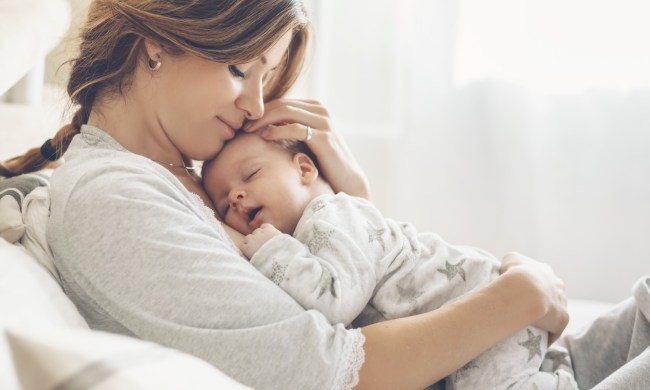The idea of being pregnant and not realizing it can seem next to impossible to anyone who has experienced the rigors of pregnancy. Many can relate to not knowing they are pregnant until they are a few months along, but going an entire pregnancy not being aware that they are growing a human being seems unheard of, right?
Cryptic pregnancy, defined as a pregnancy where the pregnant person doesn’t realize that she is pregnant, often right up to the moment of giving birth, is certainly not unheard of. In fact, that premise formed the basis of the TLC series I Didn’t Know I Was Pregnant, which ran for four seasons.
How long does cryptic pregnancy last?

Some researchers have estimated that 1 out of every 475 pregnant people won’t realize they are pregnant until they are more than halfway through their pregnancies. A British study found that 1 in 2,500 people are unaware of their pregnancy until labor begins. Yes, that would be quite a surprise!
What are the early signs of cryptic pregnancy?

In a typical pregnancy, the pregnant person learns that they are pregnant between 5-12 weeks after her last period. She may take a pregnancy test, or confirm by having a medical professional perform an ultrasound. In cryptic pregnancies, the pregnant person is not aware of the pregnancy until she is at least 20 weeks along, or sometimes much longer. The typical pregnancy is 40 weeks long, and some people experiencing a cryptic pregnancy may not realize it until days or even hours before giving birth.
It’s important to note that a cryptic pregnancy is not the same as a concealed pregnancy. “Concealed pregnancy” refers to situations in which patients realize that they are pregnant but seek to hide that fact from their partner, friends, or family. In cryptic pregnancies, the pregnant person herself is unaware that she is pregnant.
In a cryptic pregnancy, the pregnant woman may attribute any pregnancy symptoms to other causes. People who don’t realize they are pregnant may experience bleeding during the pregnancy that mimics having their period, thus leading them to conclude that they couldn’t be pregnant. The condition is more common among people who have polycystic ovarian syndrome (PCOS) which can cause skipped or irregular periods. It is also more common among people with a BMI over 30, or who recently gave birth. In some people, the position of the placenta can cause them to not feel their baby move in the womb.
What are some examples of cryptic pregnancy?

There is no one story of cryptic pregnancy or easily identifiable set of risk factors that make it more common. In 2015, a Massachusetts woman named Katie Kropas went to the hospital with severe lower back pain. At 10:15 am the hospital told her that her back pain was because she was in labor. Less than one hour later, she delivered her baby girl. She had thought she had gained some weight over the holidays and said there were no other signs. She had no other children.
In another case of cryptic pregnancy highlighted on the UK version of the TLC reality show, a woman named Nicci already had three children and was taking birth control to regulate her periods. When she developed severe lower back pain, she did not visit a doctor because she didn’t have health insurance. When she went into labor at home, she was alone with her children; her 10-year-old son called emergency services. Both she and her baby were healthy.
Do you feel the baby move?

A cryptic pregnancy can seem almost unbelievable, especially to those who have experienced just how aggressive those fetal kicks can be! For those who are experiencing a cryptic pregnancy, they may still experience their baby kicking, but the kicks may be more infrequent and feel lighter. Many women dismiss these feelings as gas or the odd stomach upset, not thinking they may be pregnant.
For most women who are experiencing a cryptic pregnancy, typical pregnancy symptoms like fatigue, sore breasts, weight gain, and discomfort are often attributed to something else like lifestyle change, digestive issues, diet change, or a myriad of other reasons.
What are the risks of cryptic pregnancy?

People who do not realize they are pregnant don’t seek out prenatal care, which is posited as the most likely explanation for why babies born to people who don’t realize they are pregnant are more often born prematurely and are underweight.
A person who has no reason to suspect pregnancy may drink alcohol, smoke cigarettes, or use drugs, all of which can potentially harm the developing baby. In stories like Nicci’s, the pregnant person may be unable to make it to the hospital and might deliver unattended, which can be risky to both mother and baby.
How to prevent cryptic pregnancy

The best way to avoid the surprise of a lifetime is to always at least consider the possibility of pregnancy as an explanation for physical symptoms like cramping, pain, weight gain, or nausea. No birth control method is 100 percent effective, and bleeding in pregnancy can mimic that of a period. Seeking medical care, including a blood test or an ultrasound, can let you rule out the possibility of a cryptic pregnancy.




